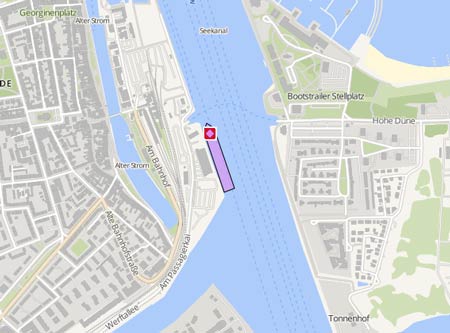FRANCISCO
Kurs/Position
vor 1 Min
Die letzten Häfen
Die letzten Wegpunkte
Die neuesten Nachrichten
Ferry suffered engine breakdown
The engine of the “Francisco,” which connects Buenos Aires with Montevideo, has broken down on the night of March 23, 2025. As a result, hundreds of passengers are being relocated to the route via Colonia; the website has disabled the purchase of direct tickets to the Uruguayan capital until April 3. Technicians were working to resolve the malfunction. For the time being, passengers are being offered the option of purchasing a ticket to Colonia (the trip takes one hour and 15 minutes) and then completing the approximately 180-kilometer leg of the trip to Montevideo by land on a company bus or by private car if a hold ticket has been purchased.
LNG-fuelled catamaran pushes frontiers in ferry powering
Incat’s fastest ferry yet, the LNG-fuelled gas turbine-powered ‘Francisco’ has successfully entered service with Buquebus in South America. Heralding a new stage in the development of high-speed ferry transportation, Buenos Aires-based Buquebus has introduced an exceptionally fast vessel to the Argentina/Uruguay travel market. Putting the Buenos Aires/Montevideo ferry service on a stronger footing to compete with airline operators, the 99m catamaran Francisco can maintain schedules at 50 knots-plus with a full payload of over 1,000 passengers and 150 cars. The vessel has a lightship speed in excess of 58 knots.
World’s Fastest Ship Christened on Oct. 1 by Argentina’s President
On Oct. 1 in Buenos Aires the President of Argentina, Christina Fernandez de Kirchner became the “Godmother” to a vessel built in Australia. Named Francisco in honour of the Argentine born Pope, the 99 metre World’s Fastest Ship, and the first large dual fuel high speed Ro-Ro to use LNG as its primary fuel, was built in Hobart by Incat Tasmania Pty Ltd and delivered recently to South American company Buquebus. The Argentinian President was joined by the President of Uruguay Jose Mujica, at the glittering ceremony in Buenos Aires, with both Presidents jointly cutting the ribbon at around 8pm Monday evening Argentina time in front of 1500 invited VIP guests. The ship, Francisco, commences service tomorrow on the River Plate (Rio Plato) between Buenos Aires and Montevideo. Francisco has capacity for 1,000 persons and 150 cars. A luxurious fit out has been incorporated, including an enormous 1,100 square metre duty-free shop and passenger accommodation for economy, tourist, business, and first class plus an exclusive VIP lounge. Australian ferry builder Incat Tasmania’s world first high speed dual-fuel vehicle and passenger ferry is the world’s fastest ship having achieved a lightship speed of 58.1 knots - (107.6 kilometres an hour).
News schreiben

